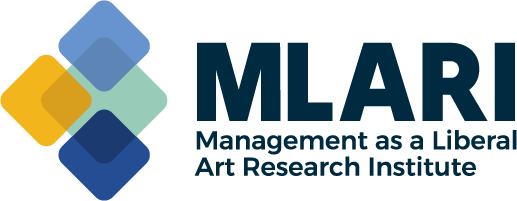Drucker on Integrity, Ethics, Honor, and Doing the Right Thing
PUBLISHED:
To Drucker, ethics and integrity were the bedrock of all business and personal practices and the necessity of considering these values was emphasized in much of what he wrote.
But this differed from what others wrote in some ways.
For example, he recognized differences in cultures in other countries and deviations from what might be considered integrity in the U.S. He also raised the question of international politics. Are certain statements acceptable if not for individual advantage, but for the common good? President Eisenhower initially lied about a U-2 spy plane that had been shot down over Russia. Was he violating his personal integrity?
The concepts of integrity, ethics, morality, obedience to the law, and even honor are closely related, but they are not the same. Drucker spoke about the need for integrity, and he raised issues regarding business ethics. Ethics is a code of values. Integrity speaks of adherence to this code of values. Morality is the quality and manner of this adherence. Drucker defined honor as demonstrable integrity and honesty, adding also that an honorable man stood by his principles.
Yet Drucker did not agree with so-called ‘situational ethics’ and warned against them. In other words, one did not behave one way in private life and another way in business or professional life. He also believed social responsibility to be a part of an individual’s and an organization’s ethical behaviour. But here, too, he gave examples of corporations that, seeking to do good, had caused harm to customers, the organization, and to society. He cautioned that, under certain conditions, what might normally be considered a corporation’s social responsibility should not be undertaken and could even be considered unethical behaviour from an unintended result or society’s view.
Drucker's Struggles
Drucker took his examination of ethics seriously. He looked at the determination of right and wrong in questions of conduct and conscience by analysing cases that illustrated general ethical rules. This might be called cost-benefit ethics or ethics for the greater good. Essentially it means that those in power - including CEOs, kings, presidents, managers – have a higher duty if their behaviour can be argued to confer benefits on others. In other words, though it is wrong to lie, in the interests of ‘the country’ it sometimes might be deemed acceptable according to one way of thinking. This approach carries the name of ‘casuistry’. Drucker called it “the ethics of social responsibility” and it had to do with his dislike of the term ‘business ethics’.
During the Cold War, and 20 years after the Japanese surprise attack on Pearl Harbor, the US was determined not to be caught short by a potential enemy again. With the U-2 reconnaissance aircraft, the Soviet Union could be overflown, and sensitive nuclear sites photographed from an altitude at which the aircraft was thought to be invulnerable. However, after several years of operations, a U-2 aircraft piloted by Francis Gary Powers was shot down from its extreme attitude by an anti-aircraft missile. Before it was known that Powers had survived and had been captured, President Eisenhower publicly lied about the fact that Powers was on a spy mission. However, in a widely published Soviet trial, Powers himself appeared and confessed that this was his mission. President Eisenhower’s ethics were never challenged on this issue. He had lied for the greater good, a higher responsibility and so most thought this acceptable. This is casuistry.
‘For the greater good’ sounds very high-minded, but Drucker maintained that it was a dangerous concept, because it could easily become a tool for politicians and business leaders to justify clearly unethical behaviour.
The Ethics of Prudence
After casuistry, Drucker looked at prudence. To be prudent means to be careful or cautious. It has benefits, but also serious defects.
Drucker said that Harry Truman, as a US senator in the early 1940s, advised senior army witnesses in the years before he became vice president that, “Generals should never do anything that needs to be explained to a Senate Committee because there is nothing one can explain to a Senate Committee.”
Now, the ethics of prudence may be good advice for staying out of trouble, but it is not much of a basis for ethical decision-making. It doesn’t say anything about the right kind of behaviour or actions that should be taken. Also, there are sometimes decisions that a leader must take that are risky and may be difficult, or even impossible, to explain but not necessarily unethical, especially if things go wrong after the decision is made. No serving general would like to see a controversial action coupled with his or her name on the front page of the New York Times, requiring his or her appearance before a Senate subcommittee. However, military decisions, and political ones too, are frequently controversial and with high risk. Nevertheless, these could be correct decisions even if results are sometimes not fully as desired. Drucker saw no basis for recommending this approach as the way to come up with ethical decisions, but only noted it as a possibility that his students should bear in mind.
The Ethics of Profit
Drucker also thought through an approach that he called the “Ethics of Profit”. This is not what you might think. Much to the contrary, Drucker wrote that it would be socially irresponsible and most certainly unethical if a business did not show a profit at least equal to the cost of capital, because failing to do so would be wasting society’s resources.
Drucker stated that profit as an ethical measurement rested on very weak moral grounds. As an incentive it could only be justified if it were a genuine cost and especially if it were the only way to maintain jobs and to grow new ones.
Confucius Was a Genius, Too, but...
Drucker felt that Confucian ethics were “the most successful and most durable of them all” although he came short of recommending Confucian ethics as the solution to all ethical conflicts. In Confucian ethics, the rules are the same for all, but there are different rules that vary according to five basic relationships, all based on interdependence. These five relationships are: superior and subordinate; parents and child; husband and wife; oldest and youngest siblings; and friend and friend. The right behaviour in each case differs depending on the best way to optimize the benefits to both parties in each relationship.
Confucian ethics demand equality of obligations on both sides, of parents to children and vice versa, and of bosses to subordinates and vice versa, for example. All have mutual obligations. Drucker pointed out that this is not always the case and is not compatible with what is considered business ethics in many countries, including the US, where one side has obligations and the other side has rights or entitlements. Though he justified Confucian ethics, which he called “the ethics of interdependence”, they cannot universally be applied as business ethics, because this system deals with issues between individuals, not groups. According to Confucian ethics, only the law can handle the rights and disagreements of groups.
Drucker's Exceptions to Lying
Through his stories and examples, Drucker taught his students, readers, audiences, and consulting clients what he had concluded only after intensive study, analysis, and thought. However, he was sometimes criticized for the examples he used. Stories that he told occasionally misstated facts in illustrating his concepts. This was true, and if challenged, he did not deny the charge. His response invariably was, “I’m not a historian; I’m trying to make a point.” His argument was one of literary licence. His creditability suffered because of this, but he felt that these were in the same class as ‘white lies’ told for the benefit of the recipient to make the point and not the teller.
What Exactly Did Drucker Believe?
Ethics is a code of values which might differ in different societies and cultures “on the other side of the Pyrenees”. According to Drucker, differing codes should be respected so long as they it did not violate one’s own code of ethics or morality in the course of its practice. So, a Japanese executive might reward a government employee in thanks for something his company received after the government employee’s retirement, but not for his company’s operations in another country. However, if the other country’s customs, practices, or laws were so abhorrent to his own ethics, he could not do business there or would suffer a lack of integrity.
Integrity speaks to adherence to this code of values. One must practise it with consistency. That is, there can be no situational ethics, no codification for special purposes, and therefore no special business ethics or situational ethics.
If ever business ethics were to be codified, Drucker thought they ought to be based on Confucian ethics, focusing on the right behaviour rather than misbehaviour or wrongdoing.
Drucker felt that managers should incorporate two points when they practise their personal philosophy of ethics:
- The ethics of personal responsibility from the physician Hippocrates: primum non nocere, which translates from the Latin to, “above all do no harm”.
- The mirror test: what kind of person do I want to see when I look into the mirror every morning?





